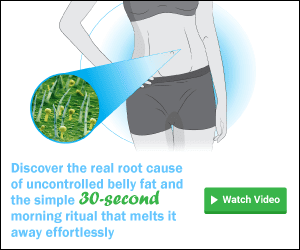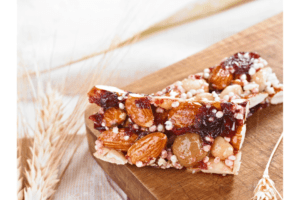These foods are often high food intolerance ( Hi-Fi) foods – meaning they can create a lot of inflammation and dysfunction in the gut and body.
Check out today's Short for a few not so healthy “health foods.”
And for my top healthy food swaps for your favorite foods, check out the link in below to read my blog post, “Simple Fat-Burning Swaps for Your Favorite Foods.”
What's one not so healthy “health” food you can think of? Share with me below 👇🏼
JJ
Link:
—
If you enjoyed this video, check out my dedicated Shorts playlist –
Any one of our videos have the power to transform your body and your life so make sure you never miss one by clicking here to subscribe
—
Hi I’m JJ, welcome to my channel. If you’re looking to lose weight, boost your energy and look and feel fabulous and fit over 40, you’re in the right place.
Here you’ll find the healthy recipes, fitness routines and the nutrition information you need to achieve healthy weight loss that stays off.
Welcome to the family!
—
NEW FOR 2022:
MY MOST POPULAR VIDEOS:
THE VIRGIN DIET – LIFESTYLE SHOW:
HEALTHY RECIPES:
SHORTS:
—
#JJVirgin #HealthFood #WeightLoss #Shorts #Health #Wellness #LoseWeight #Tofu #CottageCheese #Milk #Dairy #Soy #FatLoss
—
You’re trying to eat healthily, so you load up on fruits and vegetables at the grocery store. But when you get home and take a closer look at your haul, you realize that some of those supposedly healthy foods are anything but. Here are ten offenders that are frequently marketed as nutritious, but really aren’t doing your diet any favors.
 1. Dried fruit
1. Dried fruit
Dried fruit is often touted as a healthy snack option, but it’s actually pretty high in sugar. A single cup of raisins, for example, contains nearly 50 grams of sugar. And while dried fruit does contain some nutrients like fiber and Vitamin C, it’s also got a lot of calories – over 200 in a cup of raisins. If you’re trying to lose weight or control your blood sugar, it’s best to limit your intake of dried fruit.
2. Juice
You might think that since the juice is made from fruits and vegetables, it must be good for you. But the truth is, most commercial juices are loaded with sugar and lack the fiber that you’d get from eating whole fruits and vegetables. Plus, when juice is processed, it loses a lot of its nutrients. If you do want to drink juice, opt for 100% fruit or vegetable juices with no added sugars. And be sure to limit your intake to 8 ounces per day.
 3. “Healthy” cereals
3. “Healthy” cereals
Many cereals marketed as healthy are actually pretty high in sugar and calories. A single cup of raisin bran, for example, has over 19 grams of sugar. If you’re looking for a healthier cereal option, choose one that’s made with whole grains and doesn’t have more than 5 grams of sugar per serving.
4. “Fat-free” or “low-fat” products
Just because a food is labeled “fat-free” or “low-fat” doesn’t mean it’s healthy. In fact, many of these products are actually high in sugar and calories. And while they might be lower in fat than their full-fat counterparts, that doesn’t necessarily mean they’re good for you. When choosing fat-free or low-fat products, be sure to read the nutrition label to see what else is in them.
 5. Flavored coffee drinks
5. Flavored coffee drinks
A cup of black coffee is fine, but many flavored coffee drinks are loaded with sugar and calories. A grande pumpkin spice latte from Starbucks, for example, has over 50 grams of sugar. If you’re going to drink flavored coffee, be sure to check the nutrition label and opt for one with less than 10 grams of sugar per serving.
6. Sports drinks
Sports drinks are often marketed as healthy, but they’re actually pretty high in sugar. A single 20-ounce bottle of Gatorade, for example, has 34 grams of sugar. And while sports drinks can help you replenish electrolytes after a workout, they’re really not necessary unless you’re exercising for more than an hour at a time. If you are working out that long, it’s better to opt for a low-sugar sports drink or just plain water.
 7. “Healthy” energy bars
7. “Healthy” energy bars
Many energy bars are marketed as healthy, but they’re often nothing more than glorified candy bars. A single Larabar, for example, has over 19 grams of sugar. And while some energy bars do contain some nutrients like fiber and protein, they’re also high in calories. If you’re looking for a healthy snack option, choose one that’s lower in sugar and calories.
8. Agave nectar
Agave nectar is often touted as a healthier alternative to sugar, but it’s actually pretty similar. A single tablespoon of agave nectar has over 17 grams of sugar, which is about the same as a tablespoon of sugar. And while agave nectar does contain some nutrients like iron and calcium, it’s not necessarily any healthier than sugar. If you’re looking to cut back on sugar, it’s best to avoid agave nectar.
9. “Natural” peanut butter
Peanut butter is often touted as healthy food, but not all types are created equal. “Natural” peanut butter are usually just regular peanut butter with some added oil, salt, and sugar. And while they might be lower in fat than their full-fat counterparts, they’re not necessarily any healthier. If you’re going to eat peanut butter, it’s best to choose a type that’s made with just peanuts and salt.
10. Diet soda
Diet soda might be calorie-free, but it’s not necessarily healthy. In fact, diet sodas have been linked to weight gain, diabetes, and other health problems. If you’re looking for a healthier alternative to soda, opt for water or unsweetened tea.
These 10 “healthy” foods are actually ruining your diet. If you’re trying to lose weight or control your blood sugar, it’s best to limit your intake of these foods. Choose healthier alternatives instead. Contact us today for help creating a healthy diet that will help you reach your fitness goals!



 1. Dried fruit
1. Dried fruit 3. “Healthy” cereals
3. “Healthy” cereals 5. Flavored coffee drinks
5. Flavored coffee drinks 7. “Healthy” energy bars
7. “Healthy” energy bars
What about probiotic cottage cheese?